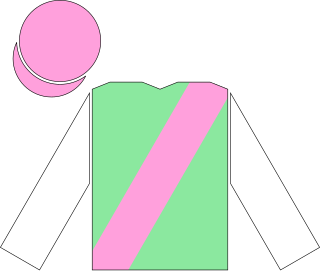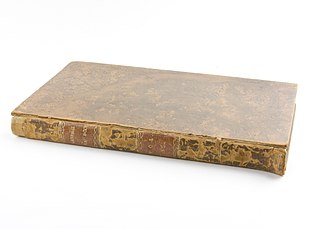
Northern Dancer was a Thoroughbred that, in 1964, became the first Canadian-bred horse to win the Kentucky Derby. After being retired from racing, he became one of the most successful sires of the 20th century. He is considered a Canadian icon and was inducted into the Canadian Sports Hall of Fame in 1965. Induction into the Racing Hall of Fame in both Canada and the United States followed in 1976. As a competitor, The Blood-Horse ranked him as one of the top 100 U.S. Thoroughbred racehorses of the 20th century. As a sire of sires, his influence on the breed is still felt worldwide.

The Byerley Turk, also spelled Byerly Turk, was the earliest of three stallions that were the founders of the modern Thoroughbred horse racing bloodstock.

The Australian Stock Horse, has been especially bred for Australian conditions. It is a hardy breed of horse noted for endurance, agility, and good temperament. Its ancestry dates to the arrival of the first horses in Australia, brought from Europe, Africa, and Asia. It is used today in a wide variety of disciplines, and is still valued as a working horse by stockmen and stockwomen throughout Australia.

Gem Twist was a 16.3 hands world champion American Thoroughbred show jumping horse registered under the name Icey Twist. Bred by equestrian Frank Chapot, Gem Twist had an incredible career at the Grand Prix level. The gelding is the only horse to have won the "American Grand Prix Association Horse of the Year" title three times, and is regarded as one of the best show-jumpers in history.

Doncaster was an English Thoroughbred racehorse and sire. He was the winner of the 1873 Epsom Derby and the sire of the great stallion Bend Or. Through Bend Or he is the direct male-line ancestor of most modern thoroughbreds.

Pocahontas (1837–1870) was an English Thoroughbred racehorse and the dam of three sires who had a great influence on the breed. Although mares are not generally considered to be as influential as sires, Thoroughbred Heritage refers to Pocahontas as "one of the most influential Thoroughbreds of all time, male or female."

Glencoe (1831–1857) was a British bred Thoroughbred racehorse, who won the 2,000 Guineas Stakes and the Ascot Gold Cup. He was one of the earliest Thoroughbred stallions imported into the United States and was a top broodmare sire there. Several outstanding sons of Lexington were out of Glencoe mares, including Asteroid, Kentucky and Norfolk.

Danehill was an American-bred, British-trained Thoroughbred racehorse who was the most successful sire of all time with 349 stakes winners and 89 Grade 1 winners. He was the leading sire in Australia nine times, the leading sire in Great Britain and Ireland three times and the leading sire in France twice.

The Crabbet Arabian Stud, also known as the Crabbet Park Stud, was an English horse breeding farm that ran from 1878 to 1972. Its founder owners, husband and wife team Wilfrid Scawen Blunt and Lady Anne Blunt, decided while travelling in the Middle East to import some of the best Arabian horses to England and breed them there. They maintained the Sheykh Obeyd estate near Cairo to facilitate this. Their daughter Judith Blunt-Lytton, 16th Baroness Wentworth carried on the stud until her death. The stud was sold up in 1971, but its bloodlines continue to influence the breed worldwide in the 21st century.

Silver Charm is a champion American Thoroughbred racehorse who won the 1997 Kentucky Derby and Preakness Stakes and 1998 Dubai World Cup. He stood at stud in the United States and Japan, and is now retired at Old Friends Farm in Kentucky.

Diomed (1777–1808) was an English Thoroughbred race horse who won the inaugural running of the Epsom Derby in 1780. Sold and imported to Virginia, he was subsequently a successful sire in the United States after the American Revolutionary War.

Bay Ronald was a Thoroughbred racehorse that had a huge impact on the breeding of sport horses, mainly through his son Dark Ronald and grandson Teddy, and also carried on his lines in theThoroughbred racing world, through his son Bayardo. He appears in the pedigrees of many dressage, show jumping, and eventing horses today.

Dark Ronald was an English bred Thoroughbred racehorse and sire with a global influence on the breeding of Thoroughbreds and sport horses, with many show jumpers tracing back to him.

Skowronek was an Arabian stallion foaled in 1908 or 1909. He was bred by Count Józef Potocki who owned the Antoniny Stud in Poland. He was imported to England as a young horse. Upon purchase by Lady Wentworth, Skowronek became a foundation stallion at Lady Wentworth's Crabbet Arabian Stud. He was most often crossed on mares who were daughters or granddaughters of the stallion Mesaoud, another foundation stallion for Crabbet, who had been bred by Ali Pasha Sherif and imported from Egypt to England by Lady Wentworth's parents, Wilfrid and Lady Anne Blunt.

Mesaoud, an Arabian stallion, foaled 1887, was one of the foundation sires of the Crabbet Arabian Stud in England. Bred in Egypt by Ali Pasha Sherif, he was imported to England by Wilfred and Lady Anne Blunt in 1891. He is recognized as an Al Khamsa Arabian, with verifiable lineage tracing to the Bedouin of the desert.

Indraff (1938–1963) was a gray Arabian stallion, foaled on May 9, 1938 and bred by Roger Selby of Ohio. His sire was Raffles and his dam was Indaia. Both his sire and dam were bred by the Crabbet Arabian Stud in England and imported to the United States by Selby.

Sir Archy was an American Thoroughbred racehorse considered one of the best racehorses of his time and later one of the most important sires in American history. He was inducted into the National Museum of Racing and Hall of Fame in the inaugural class of 1955.

Thoroughbred breeding theories, or racehorse theories, are used by horse breeders in an attempt to arrange matings that produce progeny successful in horse racing. Bloodstock experts also rely on these theories when purchasing young horses or breeding stock. A basic understanding of these theories can also help the racing public understand a horse's theoretical genetic potential. The breeding theories stem from the belief that careful analysis of bloodlines can lend predictability to breeding outcomes. A well-designed mating increases the probability of the offspring's success, although many other factors also come into play.

Negatiw, sometimes anglicized Negativ, was a gray Russian-born Arabian stallion. He was sired by Naseem, a Skowronek son bred in England, out of the Polish-bred mare, Taraszcza. Negatiw was credited as the stallion that returned the Ibrahim sire line to Poland. He is also regarded as the most internationally influential grandson of Skowronek.
Australian was a British-bred Thoroughbred racehorse and sire. He was exported to the United States where he had modest success as a racehorse but became a very successful and influential breeding stallion.


















